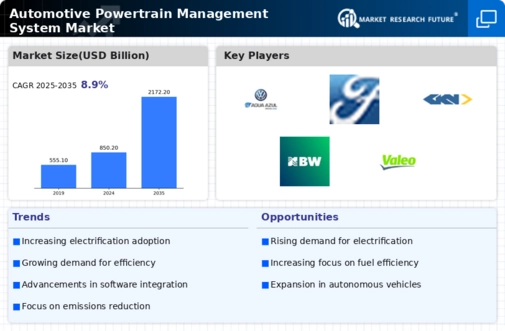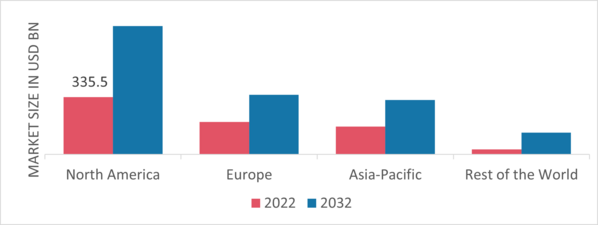-
EXECUTIVE SUMMARY
-
MARKET INTRODUCTION
-
Definition
-
Scope of the Study
- Research Objective
- Assumptions
- Limitations
-
RESEARCH METHODOLOGY
-
Overview
-
Data Mining
-
Secondary Research
-
Primary Research
- Primary Interviews and Information Gathering Process
- Breakdown of Primary Respondents
-
Forecasting Modality
-
Market Size Estimation
- Bottom-Up Approach
- Top-Down Approach
-
Data Triangulation
-
Validation
-
MARKET DYNAMICS
-
Overview
-
Drivers
-
Restraints
-
Opportunities
-
MARKET FACTOR ANALYSIS
-
Value Chain Analysis
-
Porter’s Five Forces Analysis
- Bargaining Power of Suppliers
- Bargaining Power of Buyers
- Threat of New Entrants
- Threat of Substitutes
- Intensity of Rivalry
-
COVID-19 Impact Analysis
- Market Impact Analysis
- Regional Impact
- Opportunity and Threat Analysis
-
GLOBAL AUTOMOTIVE POWERTRAIN MANAGEMENT SYSTEM, BY COMPONENT TYPE
-
Overview
-
Engine
-
Transmission
-
Differentials
-
Driveshaft
-
GLOBAL AUTOMOTIVE POWERTRAIN MANAGEMENT SYSTEM, BY VEHICLE TYPE
-
Overview
-
Passenger Cars
-
Commercial Vehicles
-
GLOBAL AUTOMOTIVE POWERTRAIN MANAGEMENT SYSTEM, BY DRIVE TYPE
-
Overview
-
Front-wheel Drive
-
Rear-wheel Drive
-
All-wheel Drive
-
GLOBAL AUTOMOTIVE POWERTRAIN MANAGEMENT SYSTEM, BY REGION
-
Overview
-
North America
- U.S.
- Canada
-
Europe
- Germany
- France
- U.K
- Italy
- Spain
- Rest of Europe
-
Asia-Pacific
- China
- India
- Japan
- South Korea
- Australia
- Rest of Asia-Pacific
-
Rest of the World
- Middle East
- Africa
- Latin America
-
COMPETITIVE LANDSCAPE
-
Overview
-
Competitive Analysis
-
Market Share Analysis
-
Major Growth Strategy in the Global Automotive powertrain management system,
-
Competitive Benchmarking
-
Leading Players in Terms of Number of Developments in the Global Automotive powertrain management system,
-
Key developments and Growth Strategies
- New Component Type Launch/Vehicle Type Deployment
- Merger & Acquisitions
- Joint Ventures
-
Major Players Financial Matrix
- Sales & Operating Income, 2022
- Major Players R&D Expenditure. 2022
-
COMPANY PROFILES
-
Aisin Seiki Co. Ltd
- Company Overview
- Financial Overview
- Products Offered
- Key Developments
- SWOT Analysis
- Key Strategies
-
Borgwarner Inc.
- Company Overview
- Financial Overview
- Products Offered
- Key Developments
- SWOT Analysis
- Key Strategies
-
Ford Motor Company
- Company Overview
- Financial Overview
- Products Offered
- Key Developments
- SWOT Analysis
- Key Strategies
-
General Motors Company
- Company Overview
- Financial Overview
- Products Offered
- Key Developments
- SWOT Analysis
- Key Strategies
-
GKN plc
- Company Overview
- Financial Overview
- Products Offered
- Key Developments
- SWOT Analysis
- Key Strategies
-
Hyundai Motor Company
- Company Overview
- Financial Overview
- Products Offered
- Key Developments
- SWOT Analysis
- Key Strategies
-
JTEKT Corporation
- Company Overview
- Financial Overview
- Products Offered
- Key Developments
- SWOT Analysis
- Key Strategies
-
Toyota Motor Corporation
- Company Overview
- Financial Overview
- Products Offered
- Key Developments
- SWOT Analysis
- Key Strategies
-
Volkswagen AG
- Company Overview
- Financial Overview
- Products Offered
- Key Developments
- SWOT Analysis
- Key Strategies
-
ZF Friedrichshafen AG
- Company Overview
- Financial Overview
- Products Offered
- Key Developments
- SWOT Analysis
- Key Strategies
-
APPENDIX
-
References
-
Related Reports
-
-
LIST OF TABLES
-
GLOBAL AUTOMOTIVE POWERTRAIN MANAGEMENT SYSTEM, SYNOPSIS, 2018-2032
-
GLOBAL AUTOMOTIVE POWERTRAIN MANAGEMENT SYSTEM, ESTIMATES & FORECAST, 2018-2032 (USD BILLION)
-
GLOBAL AUTOMOTIVE POWERTRAIN MANAGEMENT SYSTEM, BY COMPONENT TYPE, 2018-2032 (USD BILLION)
-
GLOBAL AUTOMOTIVE POWERTRAIN MANAGEMENT SYSTEM, BY VEHICLE TYPE, 2018-2032 (USD BILLION)
-
GLOBAL AUTOMOTIVE POWERTRAIN MANAGEMENT SYSTEM, BY DRIVE TYPE, 2018-2032 (USD BILLION)
-
NORTH AMERICA AUTOMOTIVE POWERTRAIN MANAGEMENT SYSTEM, BY COMPONENT TYPE, 2018-2032 (USD BILLION)
-
NORTH AMERICA AUTOMOTIVE POWERTRAIN MANAGEMENT SYSTEM, BY VEHICLE TYPE, 2018-2032 (USD BILLION)
-
NORTH AMERICA AUTOMOTIVE POWERTRAIN MANAGEMENT SYSTEM, BY DRIVE TYPE, 2018-2032 (USD BILLION)
-
NORTH AMERICA AUTOMOTIVE POWERTRAIN MANAGEMENT SYSTEM, BY COUNTRY, 2018-2032 (USD BILLION)
-
U.S. AUTOMOTIVE POWERTRAIN MANAGEMENT SYSTEM, BY COMPONENT TYPE, 2018-2032 (USD BILLION)
-
U.S. AUTOMOTIVE POWERTRAIN MANAGEMENT SYSTEM, BY VEHICLE TYPE, 2018-2032 (USD BILLION)
-
U.S. AUTOMOTIVE POWERTRAIN MANAGEMENT SYSTEM, BY DRIVE TYPE, 2018-2032 (USD BILLION)
-
CANADA AUTOMOTIVE POWERTRAIN MANAGEMENT SYSTEM, BY COMPONENT TYPE, 2018-2032 (USD BILLION)
-
CANADA AUTOMOTIVE POWERTRAIN MANAGEMENT SYSTEM, BY VEHICLE TYPE, 2018-2032 (USD BILLION)
-
CANADA AUTOMOTIVE POWERTRAIN MANAGEMENT SYSTEM, BY DRIVE TYPE, 2018-2032 (USD BILLION)
-
EUROPE AUTOMOTIVE POWERTRAIN MANAGEMENT SYSTEM, BY COMPONENT TYPE, 2018-2032 (USD BILLION)
-
EUROPE AUTOMOTIVE POWERTRAIN MANAGEMENT SYSTEM, BY VEHICLE TYPE, 2018-2032 (USD BILLION)
-
EUROPE AUTOMOTIVE POWERTRAIN MANAGEMENT SYSTEM, BY DRIVE TYPE, 2018-2032 (USD BILLION)
-
EUROPE AUTOMOTIVE POWERTRAIN MANAGEMENT SYSTEM, BY COUNTRY, 2018-2032 (USD BILLION)
-
GERMANY AUTOMOTIVE POWERTRAIN MANAGEMENT SYSTEM, BY COMPONENT TYPE, 2018-2032 (USD BILLION)
-
GERMANY AUTOMOTIVE POWERTRAIN MANAGEMENT SYSTEM, BY VEHICLE TYPE, 2018-2032 (USD BILLION)
-
GERMANY AUTOMOTIVE POWERTRAIN MANAGEMENT SYSTEM, BY DRIVE TYPE, 2018-2032 (USD BILLION)
-
FRANCE AUTOMOTIVE POWERTRAIN MANAGEMENT SYSTEM, BY COMPONENT TYPE, 2018-2032 (USD BILLION)
-
FRANCE AUTOMOTIVE POWERTRAIN MANAGEMENT SYSTEM, BY VEHICLE TYPE, 2018-2032 (USD BILLION)
-
FRANCE AUTOMOTIVE POWERTRAIN MANAGEMENT SYSTEM, BY DRIVE TYPE, 2018-2032 (USD BILLION)
-
ITALY AUTOMOTIVE POWERTRAIN MANAGEMENT SYSTEM, BY COMPONENT TYPE, 2018-2032 (USD BILLION)
-
ITALY AUTOMOTIVE POWERTRAIN MANAGEMENT SYSTEM, BY VEHICLE TYPE, 2018-2032 (USD BILLION)
-
ITALY AUTOMOTIVE POWERTRAIN MANAGEMENT SYSTEM, BY DRIVE TYPE, 2018-2032 (USD BILLION)
-
SPAIN AUTOMOTIVE POWERTRAIN MANAGEMENT SYSTEM, BY COMPONENT TYPE, 2018-2032 (USD BILLION)
-
SPAIN AUTOMOTIVE POWERTRAIN MANAGEMENT SYSTEM, BY VEHICLE TYPE, 2018-2032 (USD BILLION)
-
SPAIN AUTOMOTIVE POWERTRAIN MANAGEMENT SYSTEM, BY DRIVE TYPE, 2018-2032 (USD BILLION)
-
U.K AUTOMOTIVE POWERTRAIN MANAGEMENT SYSTEM, BY COMPONENT TYPE, 2018-2032 (USD BILLION)
-
U.K AUTOMOTIVE POWERTRAIN MANAGEMENT SYSTEM, BY VEHICLE TYPE, 2018-2032 (USD BILLION)
-
U.K AUTOMOTIVE POWERTRAIN MANAGEMENT SYSTEM, BY DRIVE TYPE, 2018-2032 (USD BILLION)
-
REST OF EUROPE AUTOMOTIVE POWERTRAIN MANAGEMENT SYSTEM, BY COMPONENT TYPE, 2018-2032 (USD BILLION)
-
REST OF EUROPE AUTOMOTIVE POWERTRAIN MANAGEMENT SYSTEM, BY VEHICLE TYPE, 2018-2032 (USD BILLION)
-
REST OF EUROPE AUTOMOTIVE POWERTRAIN MANAGEMENT SYSTEM, BY DRIVE TYPE, 2018-2032 (USD BILLION)
-
ASIA PACIFIC AUTOMOTIVE POWERTRAIN MANAGEMENT SYSTEM, BY COMPONENT TYPE, 2018-2032 (USD BILLION)
-
ASIA PACIFIC AUTOMOTIVE POWERTRAIN MANAGEMENT SYSTEM, BY VEHICLE TYPE, 2018-2032 (USD BILLION)
-
ASIA PACIFIC AUTOMOTIVE POWERTRAIN MANAGEMENT SYSTEM, BY DRIVE TYPE, 2018-2032 (USD BILLION)
-
ASIA PACIFIC AUTOMOTIVE POWERTRAIN MANAGEMENT SYSTEM, BY COUNTRY, 2018-2032 (USD BILLION)
-
JAPAN AUTOMOTIVE POWERTRAIN MANAGEMENT SYSTEM, BY COMPONENT TYPE, 2018-2032 (USD BILLION)
-
JAPAN AUTOMOTIVE POWERTRAIN MANAGEMENT SYSTEM, BY VEHICLE TYPE, 2018-2032 (USD BILLION)
-
JAPAN AUTOMOTIVE POWERTRAIN MANAGEMENT SYSTEM, BY DRIVE TYPE, 2018-2032 (USD BILLION)
-
CHINA AUTOMOTIVE POWERTRAIN MANAGEMENT SYSTEM, BY COMPONENT TYPE, 2018-2032 (USD BILLION)
-
CHINA AUTOMOTIVE POWERTRAIN MANAGEMENT SYSTEM, BY VEHICLE TYPE, 2018-2032 (USD BILLION)
-
CHINA AUTOMOTIVE POWERTRAIN MANAGEMENT SYSTEM, BY DRIVE TYPE, 2018-2032 (USD BILLION)
-
INDIA AUTOMOTIVE POWERTRAIN MANAGEMENT SYSTEM, BY COMPONENT TYPE, 2018-2032 (USD BILLION)
-
INDIA AUTOMOTIVE POWERTRAIN MANAGEMENT SYSTEM, BY VEHICLE TYPE, 2018-2032 (USD BILLION)
-
INDIA AUTOMOTIVE POWERTRAIN MANAGEMENT SYSTEM, BY DRIVE TYPE, 2018-2032 (USD BILLION)
-
AUSTRALIA AUTOMOTIVE POWERTRAIN MANAGEMENT SYSTEM, BY COMPONENT TYPE, 2018-2032 (USD BILLION)
-
AUSTRALIA AUTOMOTIVE POWERTRAIN MANAGEMENT SYSTEM, BY VEHICLE TYPE, 2018-2032 (USD BILLION)
-
AUSTRALIA AUTOMOTIVE POWERTRAIN MANAGEMENT SYSTEM, BY DRIVE TYPE, 2018-2032 (USD BILLION)
-
SOUTH KOREA AUTOMOTIVE POWERTRAIN MANAGEMENT SYSTEM, BY COMPONENT TYPE, 2018-2032 (USD BILLION)
-
SOUTH KOREA AUTOMOTIVE POWERTRAIN MANAGEMENT SYSTEM, BY VEHICLE TYPE, 2018-2032 (USD BILLION)
-
SOUTH KOREA AUTOMOTIVE POWERTRAIN MANAGEMENT SYSTEM, BY DRIVE TYPE, 2018-2032 (USD BILLION)
-
REST OF ASIA-PACIFIC AUTOMOTIVE POWERTRAIN MANAGEMENT SYSTEM, BY COMPONENT TYPE, 2018-2032 (USD BILLION)
-
REST OF ASIA-PACIFIC AUTOMOTIVE POWERTRAIN MANAGEMENT SYSTEM, BY VEHICLE TYPE, 2018-2032 (USD BILLION)
-
REST OF ASIA-PACIFIC AUTOMOTIVE POWERTRAIN MANAGEMENT SYSTEM, BY DRIVE TYPE, 2018-2032 (USD BILLION)
-
REST OF WORLD AUTOMOTIVE POWERTRAIN MANAGEMENT SYSTEM, BY COMPONENT TYPE, 2018-2032 (USD BILLION)
-
REST OF WORLD AUTOMOTIVE POWERTRAIN MANAGEMENT SYSTEM, BY VEHICLE TYPE, 2018-2032 (USD BILLION)
-
REST OF WORLD AUTOMOTIVE POWERTRAIN MANAGEMENT SYSTEM, BY DRIVE TYPE, 2018-2032 (USD BILLION)
-
REST OF WORLD AUTOMOTIVE POWERTRAIN MANAGEMENT SYSTEM, BY COUNTRY, 2018-2032 (USD BILLION)
-
MIDDLE EAST AUTOMOTIVE POWERTRAIN MANAGEMENT SYSTEM, BY COMPONENT TYPE, 2018-2032 (USD BILLION)
-
MIDDLE EAST AUTOMOTIVE POWERTRAIN MANAGEMENT SYSTEM, BY VEHICLE TYPE, 2018-2032 (USD BILLION)
-
MIDDLE EAST AUTOMOTIVE POWERTRAIN MANAGEMENT SYSTEM, BY DRIVE TYPE, 2018-2032 (USD BILLION)
-
AFRICA AUTOMOTIVE POWERTRAIN MANAGEMENT SYSTEM, BY COMPONENT TYPE, 2018-2032 (USD BILLION)
-
AFRICA AUTOMOTIVE POWERTRAIN MANAGEMENT SYSTEM, BY VEHICLE TYPE, 2018-2032 (USD BILLION)
-
AFRICA AUTOMOTIVE POWERTRAIN MANAGEMENT SYSTEM, BY DRIVE TYPE, 2018-2032 (USD BILLION)
-
LATIN AMERICA AUTOMOTIVE POWERTRAIN MANAGEMENT SYSTEM, BY COMPONENT TYPE, 2018-2032 (USD BILLION)
-
LATIN AMERICA AUTOMOTIVE POWERTRAIN MANAGEMENT SYSTEM, BY VEHICLE TYPE, 2018-2032 (USD BILLION)
-
LATIN AMERICA AUTOMOTIVE POWERTRAIN MANAGEMENT SYSTEM, BY DRIVE TYPE, 2018-2032 (USD BILLION)
-
LIST OF FIGURES
-
RESEARCH PROCESS
-
MARKET STRUCTURE FOR THE GLOBAL AUTOMOTIVE POWERTRAIN MANAGEMENT SYSTEM
-
MARKET DYNAMICS FOR THE GLOBAL AUTOMOTIVE POWERTRAIN MANAGEMENT SYSTEM
-
GLOBAL AUTOMOTIVE POWERTRAIN MANAGEMENT SYSTEM, SHARE (%), BY COMPONENT TYPE, 2022
-
GLOBAL AUTOMOTIVE POWERTRAIN MANAGEMENT SYSTEM, SHARE (%), BY VEHICLE TYPE, 2022
-
GLOBAL AUTOMOTIVE POWERTRAIN MANAGEMENT SYSTEM, SHARE (%), BY DRIVE TYPE, 2022
-
GLOBAL AUTOMOTIVE POWERTRAIN MANAGEMENT SYSTEM, SHARE (%), BY REGION, 2022
-
NORTH AMERICA: AUTOMOTIVE POWERTRAIN MANAGEMENT SYSTEM, SHARE (%), BY REGION, 2022
-
EUROPE: AUTOMOTIVE POWERTRAIN MANAGEMENT SYSTEM, SHARE (%), BY REGION, 2022
-
ASIA-PACIFIC: AUTOMOTIVE POWERTRAIN MANAGEMENT SYSTEM, SHARE (%), BY REGION, 2022
-
REST OF THE WORLD: AUTOMOTIVE POWERTRAIN MANAGEMENT SYSTEM, SHARE (%), BY REGION, 2022
-
GLOBAL AUTOMOTIVE POWERTRAIN MANAGEMENT SYSTEM: COMPANY SHARE ANALYSIS, 2022 (%)
-
AISIN SEIKI CO. LTD : FINANCIAL OVERVIEW SNAPSHOT
-
AISIN SEIKI CO. LTD : SWOT ANALYSIS
-
BORGWARNER INC. : FINANCIAL OVERVIEW SNAPSHOT
-
BORGWARNER INC. : SWOT ANALYSIS
-
FORD MOTOR COMPANY : FINANCIAL OVERVIEW SNAPSHOT
-
FORD MOTOR COMPANY : SWOT ANALYSIS
-
GENERAL MOTORS COMPANY : FINANCIAL OVERVIEW SNAPSHOT
-
GENERAL MOTORS COMPANY : SWOT ANALYSIS
-
GKN PLC : FINANCIAL OVERVIEW SNAPSHOT
-
GKN PLC : SWOT ANALYSIS
-
HYUNDAI MOTOR COMPANY : FINANCIAL OVERVIEW SNAPSHOT
-
HYUNDAI MOTOR COMPANY : SWOT ANALYSIS
-
JTEKT CORPORATION : FINANCIAL OVERVIEW SNAPSHOT
-
JTEKT CORPORATION : SWOT ANALYSIS
-
TOYOTA MOTOR CORPORATION : FINANCIAL OVERVIEW SNAPSHOT
-
TOYOTA MOTOR CORPORATION : SWOT ANALYSIS
-
VOLKSWAGEN AG : FINANCIAL OVERVIEW SNAPSHOT
-
VOLKSWAGEN AG : SWOT ANALYSIS
-
ZF FRIEDRICHSHAFEN AG : FINANCIAL OVERVIEW SNAPSHOT
-
ZF FRIEDRICHSHAFEN AG : SWOT ANALYSIS









Leave a Comment